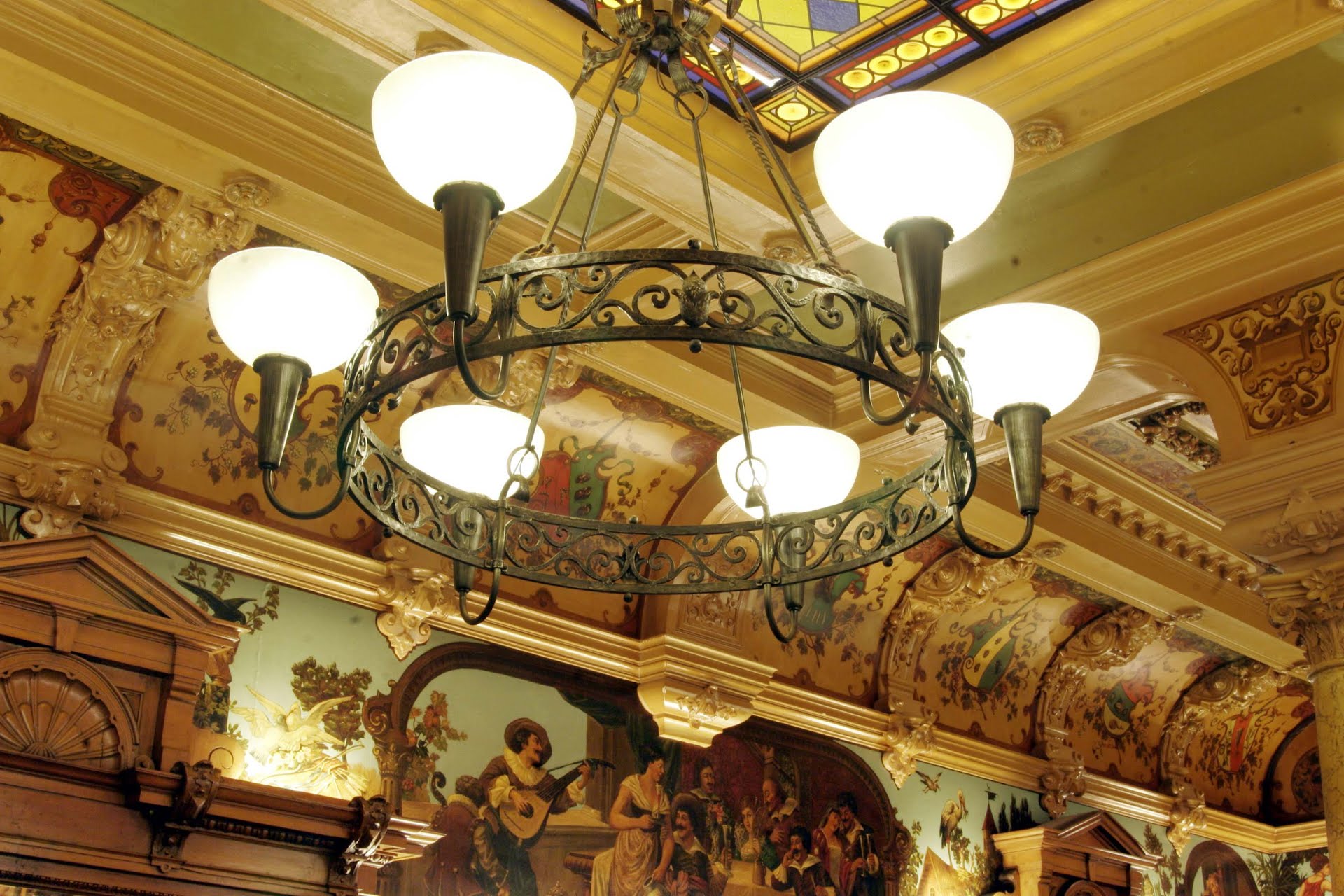In 1887, the architect Friedrich Kronauer bought the house. He had a building permit for a restaurant and a beer hall, and sold the property in 1888 to the restauranteur Heinrich Toggweiler-Kölliker. Through the extension on the back and the reconstruction of the ground floor, a three-part restaurant emerged, which still stands today.
In the lower area, the so-called "Bärengraben" (bear pit), accessible from the In Gassen street entry, the guest is met by an oil painting of a rustic drinking scene surrounded by finely arranged panelling. The beer hall is the restaurant's showpiece. At the centre is a powerful "Corinthian" pillar, plastered in stucco marble. The wall panelling is interrupted by two large mirrors, which have lavish baroque frames. Stretching across them is a fresco depicting cheerful cherubs, singing frogs, musical monkeys, and lively drinking buddies. The vault is ornamented with Hermes figures and "culinary emblems"– a cornucopia of vegetables, crabs, and tortoises – indicating a rich banquet of food. A stained glass window integrated in the hall's painted stucco ceiling is characteristic for interiors of the epoch. The rear hall is designed in a simpler fashion, attaining its rhythmic structure from three wood pillars.





